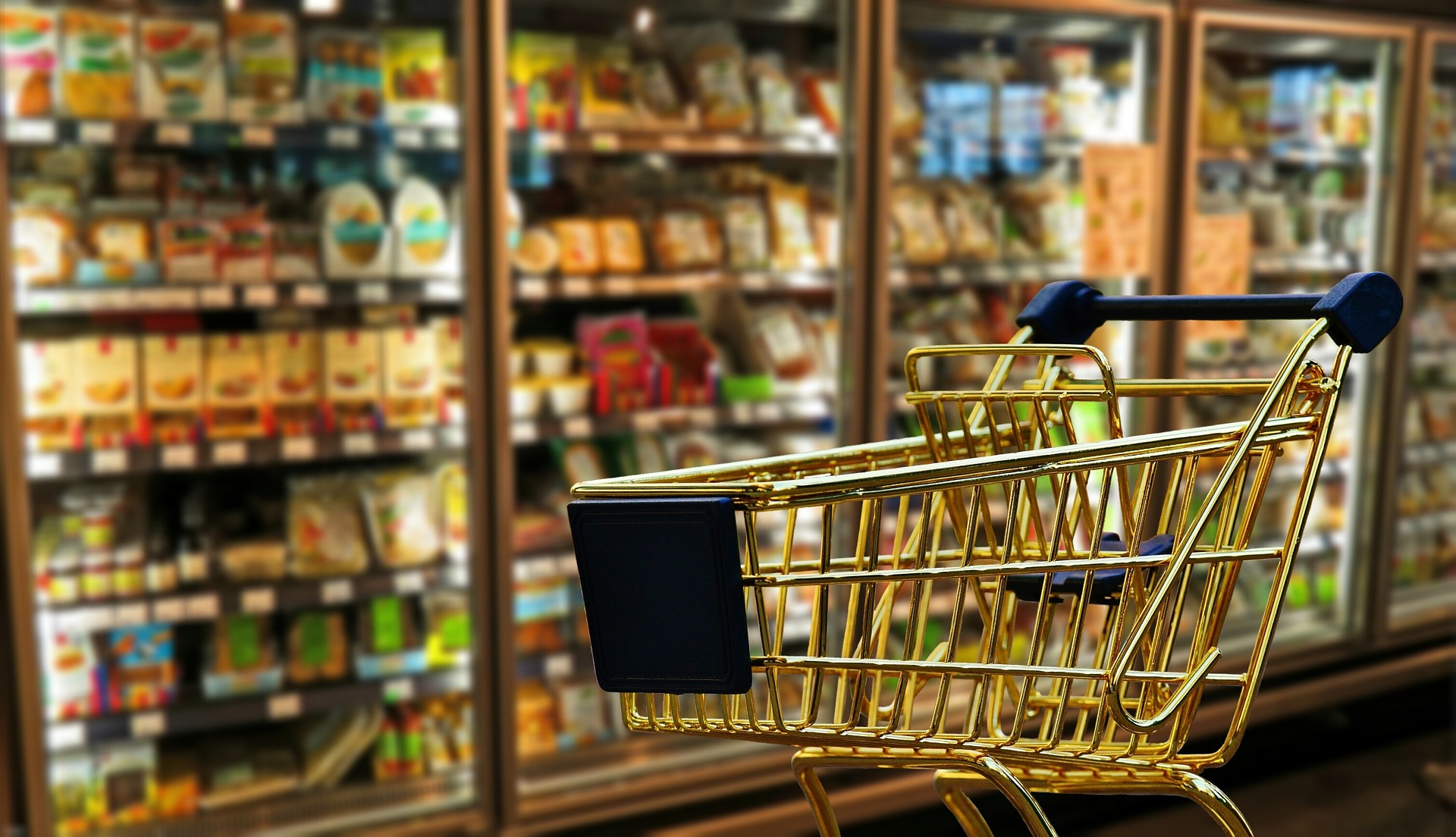

Research suggests that food price increases are returning to ‘more normal’ rates, although shoppers continue to seek out cheaper own-brand goods.
According to research firm Kantar, grocery price inflation has fallen to 2.4%, the lowest rate since October 2021.
These findings precede official figures expected on Wednesday, which are anticipated to reveal a significant drop in overall inflation.
Despite the news that food prices are set to return to “more normal” levels, it has been revealed that shoppers will likely still follow money-saving habits. Luckily, TikTok is full of money-saving tips and tricks, with users sharing hacks on how to stretch their supermarket shopping budget.
From yellow sticker hunting to bringing your own bags, the hashtags #Groceryshoppinghacks and #foodshoppingtips feature lots of money-saving tips, proving that everyone is looking for ways to make their money go further at the tills.
But what are the best ways to save money on your weekly shop, according to TikTok?
Tom Church, Expert Bargain Hunter and Co-Founder at LatestDeals.co.uk has looked through the #Groceryshoppinghacks videos on TikTok, to reveal the top 10 supermarket shopping hacks that you can implement to stay savvy at the supermarket and save money on your grocery bill.
- Make the switch
A TikTok hack that could help households save up to a third on their weekly food shop is switching from premium or branded products to supermarket own-brand or value products.
The main difference between premium/branded items and supermarket own brands is usually the price. Many supermarket own-brand products often match branded items in taste tests, so it’s worth trying them to see if they measure up.
By opting for these cheaper items, you can consistently save money. If you find they don’t meet your taste expectations, you’ve still spent less and can try another budget-friendly alternative.
- Time your weekly shop to find the most yellow sticker items on the shelves
A great way to save money at the supermarket is to look for yellow reduction stickers on items nearing their sell-by date. Supermarkets often apply these reductions at specific times of day, so it can be useful to learn when this happens at your preferred store. Tom shared the best times to shop for yellow stickers at each supermarket:
- Aldi – Red clearance stickers are applied from 8am, offering up to 50% off, which can increase to 75% as food nears its use-by date.
- Asda – Initial reductions start in the morning, with possible further discounts from 7pm.
- Co-Op – Yellow clearance labels are used, with discount times varying by store. Final reductions can reach up to 75% off.
- Iceland – Yellow stickers mark reduced items, with discounts applied in the morning.
- Lidl – Orange stickers usually indicate a 30% discount from the morning. Occasionally, green ‘waste not!’ stickers are priced at 20p or 70p.
- Marks & Spencer – Yellow stickers are applied in the morning, offering substantial discounts due to higher original prices.
- Morrisons – Best reductions are in the evening. For £3.49 you can also get Magic Boxes through the Too Good To Go app which offer about £10 worth of food.
- Sainsbury’s – Discounts start at 25% off at 1pm, increase to 50% at 5pm, and reach 75% by 8pm.
- Tesco – Yellow sticker reductions occur in the afternoons, focusing on fresh meat, fish, fruit, veg, and bakery items.
- Waitrose – Discount times vary by store, with markdowns generally occurring in the afternoon and increasing towards closing time.
However, it’s important not to let these yellow stickers tempt you into unnecessary purchases. Shoppers should only buy reduced items if they are already planning to purchase them. Otherwise, this could lead to more waste and higher overall spending, as you end up buying items you don’t need.
- Bring your own bags or baskets (BYOB)
Forgetting your bags when heading to the supermarket can result in extra charges at the checkout, so savvy TikTok users have devised strategies to ensure they always have a bag with them. This can include keeping spare bags in your car, placing them by the front door or near your keys, putting a reminder on the door, or writing ‘bags’ at the top of your shopping list.
If you’re driving to the store, another clever tip is to keep storage baskets in your car’s boot. This makes packing and unpacking items much quicker, as you can transfer your shopping straight from the trolley. Additionally, you’ll have fewer trips to and from the car when you get home.
- Choose loose over-packaged
Purchasing loose fruit and vegetables instead of pre-packed options can save you money and reduce plastic consumption. Additionally, you might not need the quantity included in pre-packaged items. By choosing loose produce, you can select the exact quantity, size, and quality you want.
- Shop online
Another savvy TikTok tip is to shop online instead of in-store. This can reduce the temptation to make impulse purchases, which is especially effective if you tend to shop while hungry. As we all know, cravings can lead to buying much more than planned.
Shopping online also offers 24/7 availability, allowing you to shop at your convenience. Many supermarkets provide free shipping for orders over a certain amount, as well as loyalty programs that can save you extra money on future purchases.
Additionally, shopping online allows you to take your time before checking out, making it easier to browse deals and offers, potentially saving more money in the long run.
- Avoid baskets where possible
Many TikTok hack videos suggest that shoppers should refrain from using a basket if they’re only at the supermarket for a few items. This strategy helps reduce the temptation to purchase unplanned items.
Avoiding a basket when feasible is a simple yet effective way to adhere to your grocery list and only purchase what you initially intended to buy. This is particularly useful if you’ve entered the store to grab a few ingredients you forgot during your last visit.
Once you’ve gathered the necessary items, limiting yourself to what you can carry helps keep your grocery budget in check and minimises the risk of impulse buying triggered by in-store deals.
- Get a loyalty/reward card
Another tip from resourceful TikTok users is to acquire loyalty or rewards cards to accumulate points that can be used for discounts on your purchases.
These cards offer additional benefits such as birthday discounts, early access to products, and exclusive deals/offers.
While these exclusive offers can lead to significant savings over time, it’s crucial not to limit your shopping to just one store due to a loyalty scheme.
Additionally, it’s wise to focus your spending at stores where you can save on items you typically purchase. Some vouchers, like those from the Clubcard or Nectar card schemes, may encourage spending that could otherwise be saved.
- Pick items from the back of the shelf
We all aim to select food products with the longest possible shelf life, ensuring that the bread we purchase will remain fresh for several days. Resourceful TikTok users have shared a clever trick for securing the best dates: opt for items positioned further back on the shelf, as they typically boast longer best-before dates.
When restocking shelves, supermarket staff often place products with the earliest dates at the front, enticing customers to choose the closest item. However, by delving deeper into the shelves, shoppers are more likely to discover products with superior dates.
Since these items may be fresher, they are likely to last longer, reducing the risk of waste.
- Don’t shop at eye level
Supermarkets reportedly place premium items at eye level to encourage shoppers to pick them over cheaper alternatives.
That’s why many savvy TikTokers suggest scanning the shelves from top to bottom to find the cheaper-priced items.
Alternatively, shoppers may be able to find cheaper-priced products in the longer-life aisle as opposed to fresh options.
- Download food waste apps
With 9.5 million tonnes of food wasted per year in the UK, we all play a part in the far-reaching problem of food waste.
Over the last couple of years, the development of food waste apps means that it’s never been easier to tackle the problem – and it can all be done on your phone.
Some of these apps involve rescuing food from cafés, restaurants, bakeries, shops and neighbours that might otherwise be destined for the bin. This initiative allows consumers to eat cheaply and do their bit for the environment, while businesses can enjoy extra customers and avoid throwing away their produce.
Downloading food waste apps such as ‘Too Good To Go’ can help shoppers pick up a bargain on food that stores would otherwise be throwing away.








